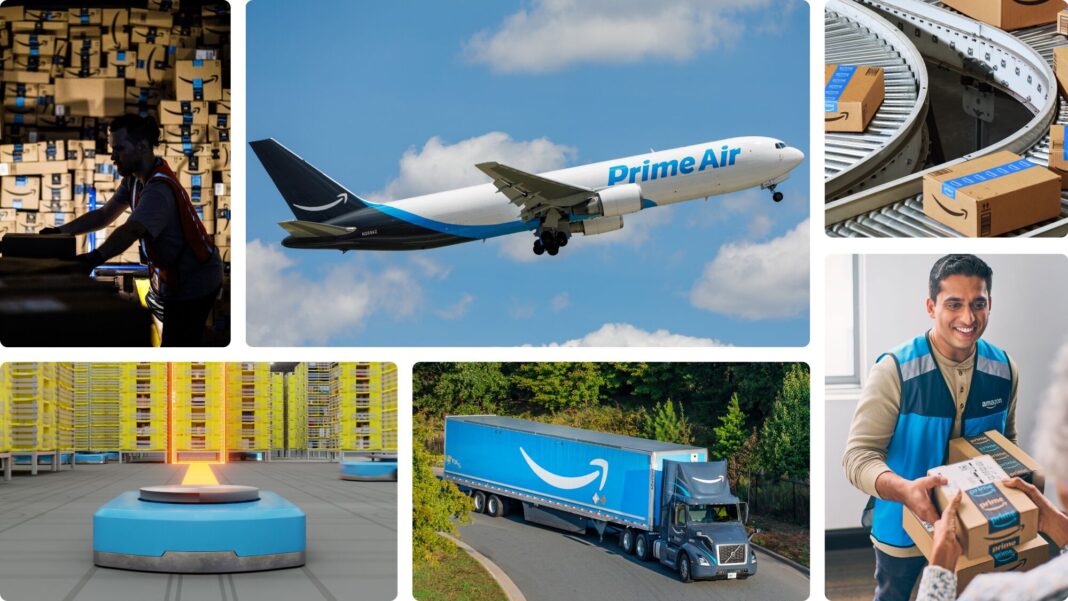Amazon is widening the reach of its logistics network and introducing new customs-processing tools aimed at cutting red tape for small businesses, the company said this week.
In a company blog post, Amazon said it now supports more than 600,000 sellers worldwide who move over 5 billion items annually through its global logistics, domestic freight, and bulk warehousing network. The update is part of “Supply Chain by Amazon,” the end-to-end service launched in 2023 to move goods from factories to customers’ doors.
A major piece of the announcement is the expansion of Amazon’s Multi-Channel Fulfillment program. Sellers using Walmart Marketplace, Shopify and SHEIN will be able to route orders through Amazon’s fulfillment centers, joining existing channels such as eBay, Etsy, Temu and TikTok Shop. Amazon framed the step as a way for brands to keep a single pool of inventory while tapping faster shipping across multiple storefronts. The company said merchants using these services have reported an average 19% sales lift, fewer stockouts and better turnover.
Amazon is also introducing an automated customs experience designed to reduce the time and effort required to move goods across borders. The company says the new process can pre-populate required fields, reuse data across documents for consistency, and flag likely errors before they cause delays. Early results show small businesses cut their customs paperwork time by more than half, according to Amazon.
On the inventory side, Amazon is launching Global Warehousing and Distribution, allowing sellers to hold products in bulk near manufacturing sites at lower cost and then release stock to destination countries as needed. In early pilots, Amazon says it moved products from the new bulk storage service into its fulfillment network up to seven days faster, helping sellers keep popular items in stock.
The company is adding more direct international shipping “arcs” that connect major manufacturing hubs to top destination countries. By the end of 2026, Amazon expects its global logistics coverage to handle 96% of inbound volume sent to Fulfillment by Amazon, which the company says should mean fewer handoffs and more predictable schedules.
Amazon says its forecasting and placement systems help position inventory closer to customers ahead of spikes in demand. The company reported delivering more than 9 billion items to Prime customers on the same or next day last year, and noted that products available for same-day delivery see, on average, a 20% sales lift compared with two-day options.
Industry watchers have quickly zeroed in on the competitive wrinkle: Amazon fulfilling orders placed on rival marketplaces, including Walmart. Axios noted the move could draw attention from antitrust regulators even as third-party sellers welcome simpler logistics.
Some small brands quoted by Amazon said the expanded toolset helps them sleep easier during peak holiday periods and frees time for product design. Amazon argues the combination of bulk storage, cross-border transport, freight, and last-mile delivery—plus automated handoffs between each step—can cut costs and reduce out-of-stock risk for independent merchants.
What’s next: Amazon says support for Walmart orders is live, added capabilities for Shopify are rolling out, and SHEIN support will be in place by year-end. The company plans to keep adding shipping lanes and to broaden coverage for inbound freight through 2026.
Editor’s note: All figures and claims in this report are attributed to Amazon’s public statements unless otherwise noted.
A global media for the latest news, entertainment, music fashion, and more.















